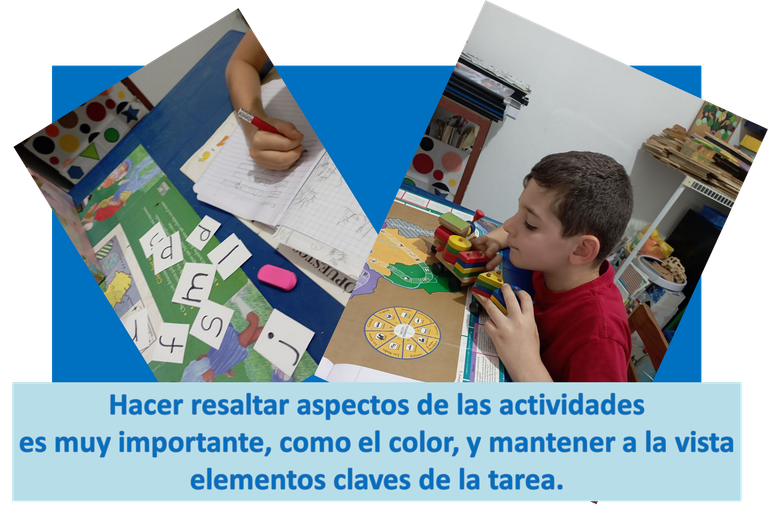

Las características de la atención en los niños autistas ha sido estudiada en forma reiterada por investigadores como Ángel Rivière, Utha Firt y Juan Martos y Fernando Cuetos, por mencionar algunos. Si nos colocamos un tanto fuera del área de autismo, Russell Barkley es uno de los que ha logrado realizar mayores contribuciones en referencia al tema de la atención, siendo su área de estudio el trastorno por déficit de atención con hiperactividad, Tdah.
La atención como proceso cognitivo superior es una sola y la comparten todos los seres humanos, como parte de lo que conforman las funciones ejecutivas, FE. Este término apareció de la mano de Muriel Lezak, en 1983, cuando hizo referencia a ciertas habilidades cognitivas que facultan a las personas para tener un comportamiento adaptativo.

La referida autora definió las FE como el conjunto de competencias mediante las cuales podemos regular y controlar otras funciones cognitivas y además el comportamiento. Muriel, puso el énfasis, al definir y relacionar las FE con la capacidad de las personas para procesar la información en forma selectiva, mantenerla en el tiempo y emplear la información retenida para realizar otras tareas o paso sucesivos de una misma tarea.
La atención podría definirse como la capacidad de generar, seleccionar, dirigir y mantener un nivel de activación adecuado para procesar la información relevante. Dicho de otra forma, la atención es un proceso que tiene lugar a nivel cognitivo y que permite orientarnos hacia aquellos estímulos que son relevantes, ignorando los que no lo son para actuar en consecuencia.
¿Qué es la atención?
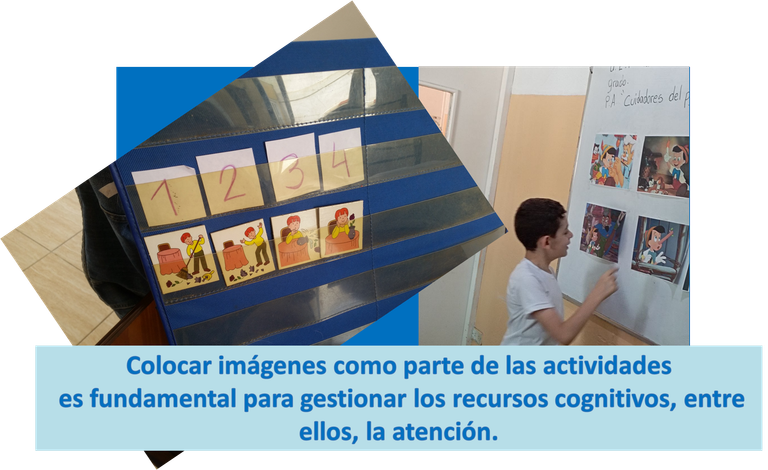
Hoy sabemos que los niños autistas tienen problemas relacionados con la atención y que por eso se les dificulta mantener el nivel de activación apropiado al realiza una tarea: inicio, desarrollo y cierre. Esta dificultad la comparten tanto los niños con autismo, como los niños con Tdah. No siendo los únicos trastornos del desarrollo neurológico en presentar este dificultad; sin embargo en el día de hoy me voy a referir a estas dos condiciones.
Las FE están afectadas en ambas condiciones del desarrollo y por lo tanto, los procesos atencionales también. Según Bloch-Rosen (2005), en un estudio sobre criterios de diagnóstico diferencial entre autismo y Tdah, en referencia a los problemas con la atención señaló que…
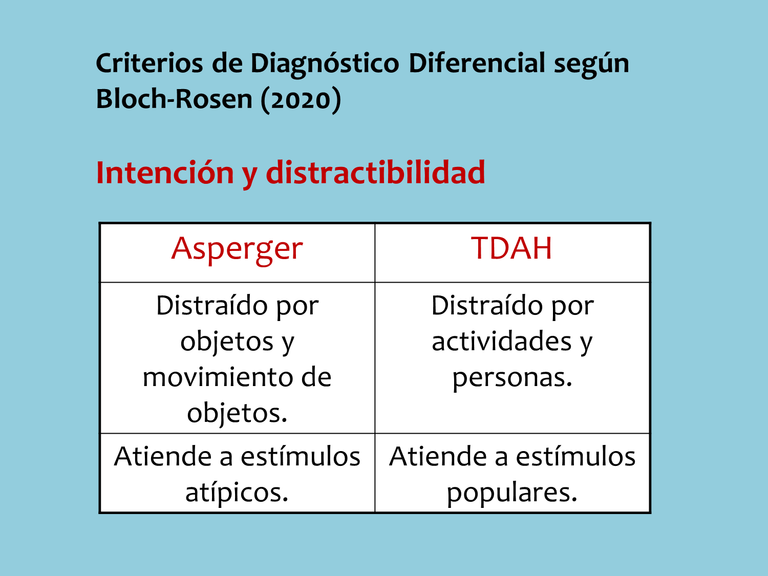
Siendo las preferencias o causas de distracción diferentes, queda entendido que la atención como proceso cognitivo está afectada en ambos.
Hace algún tiempo, digamos antes de la década de los años 90, los procesos atencionales se abordaban sin involucrar a las FE. Ahora sabemos que la atención es un aspecto central de este constructo, por lo que tanto los instrumentos de evaluación como los instrumentos de corrección han cambiado en forma significativa. Se plantean programas con actividades basadas en autoinstrucciones donde se involucra de manera intencional, al trabajar la atención, la observación, la planificación, la anticipación de errores y la autoevaluación.
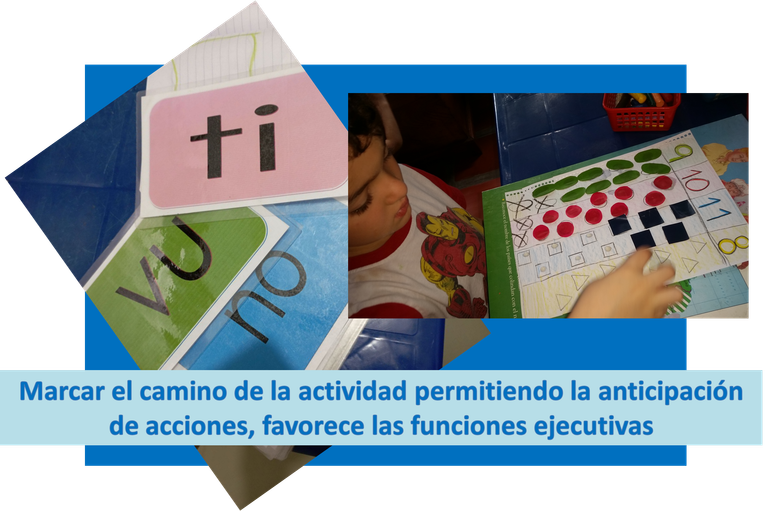
Es muy importante tener claro que las FE, tanto en autismo como en Tdah, comparten los mismos elementos; pero a nivel cognitivo y conductual se manifiestan de formas diferentes. La estimulación para ambas poblaciones, comparten nucleos comunes desde el punto de vista de la estrategia, los formatos de las actividades variarán dependiendo de cada condición y de cada niño.
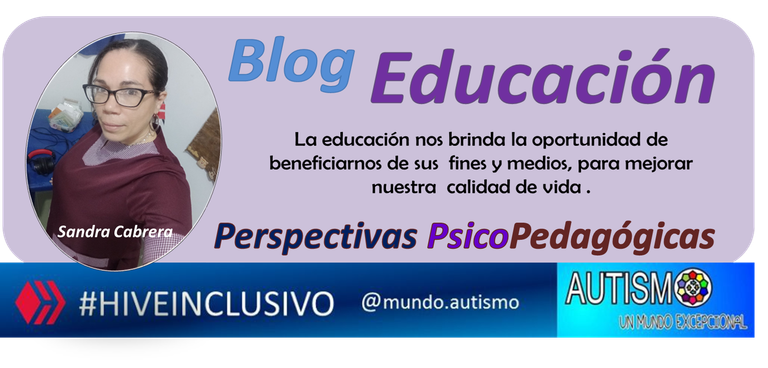
Soy Sandra Cabrera, licenciada en Dificultades para el Aprendizaje, con estudios de postgrado en Educación Especial Integral, Planificación Educativa y Literatura Infantil. Si te interesan los temas sobre educación especial, la discapacidad y las condiciones especiales del desarrollo, puedes contactarme a través de los números 04128032993 y 0412 8333334 y en:
El canal de Telegram, Trastornos del Aprendizaje.
En las redes sociales Instagram y Facebook1 y Facebook2. Sandra Cabrera Psicopedagoga.
En la cuenta de spreaker, @sandracabrerapodcast.
Las forografias las tomé con mi teléfono Redmi11 y las edité en PowerPoint.
La traducción la he realizado con Google.
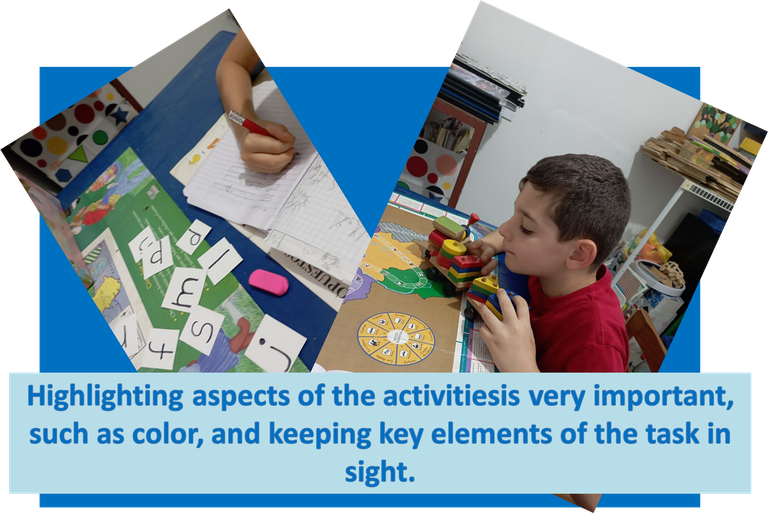

The characteristics of attention in autistic children have been repeatedly studied by researchers such as Ángel Rivière, Utha Firt and Juan Martos and Fernando Cuetos, to name a few. If we place ourselves a little outside the area of autism, Russell Barkley is one of those who has managed to make the greatest contributions in reference to the subject of attention, his area of study being attention deficit hyperactivity disorder, ADHD.
Attention as a higher cognitive process is one and is shared by all human beings, as part of what makes up the executive functions, FE. This term appeared from the hand of Muriel Lezak, in 1983, when she referred to certain cognitive abilities that enable people to have adaptive behavior.
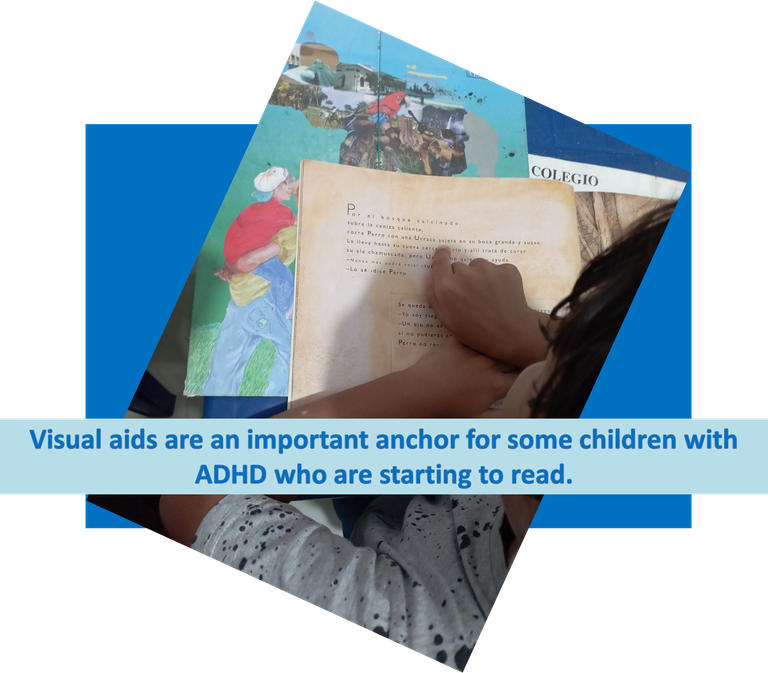
The aforementioned author defined EF as the set of competencies through which we can regulate and control other cognitive functions and also behavior. Muriel put the emphasis on defining and relating EF with the ability of people to process information selectively, maintain it over time and use the retained information to perform other tasks or successive steps of the same task.
Attention could be defined as the ability to generate, select, direct and maintain an adequate level of activation to process relevant information. In other words, attention is a process that takes place at a cognitive level and that allows us to orient ourselves towards those stimuli that are relevant, ignoring those that are not in order to act accordingly.
What is attention?
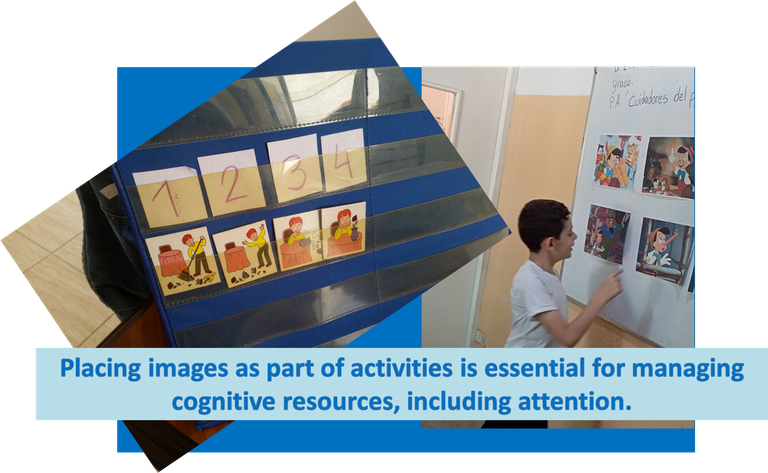
Today we know that autistic children have problems related to attention and that is why it is difficult for them to maintain the appropriate level of activation when performing a task: initiation, development and closure. This difficulty is shared by both children with autism and children with ADHD. These are not the only neurodevelopmental disorders that present this difficulty; however, today I am going to refer to these two conditions.
EFs are affected in both developmental conditions and therefore, attentional processes as well. According to Bloch-Rosen (2005), in a study on differential diagnostic criteria between autism and ADHD, in reference to problems with attention, he pointed out that…
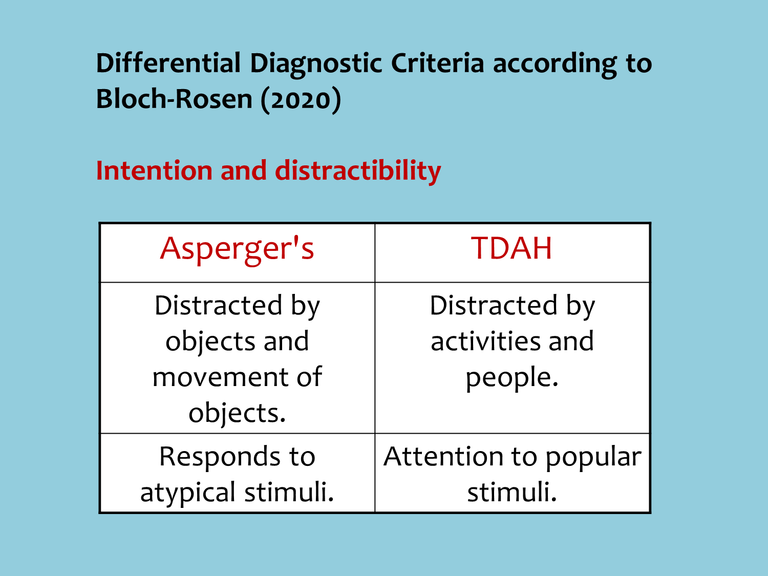
Since the preferences or causes of distraction are different, it is understood that attention as a cognitive process is affected in both.
Some time ago, let's say before the 1990s, attentional processes were addressed without involving EF. Now we know that attention is a central aspect of this construct, so both the evaluation instruments and the correction instruments have changed significantly. Programs are proposed with activities based on self-instructions where the child is intentionally involved, working on attention, observation, planning, error anticipation and self-assessment.
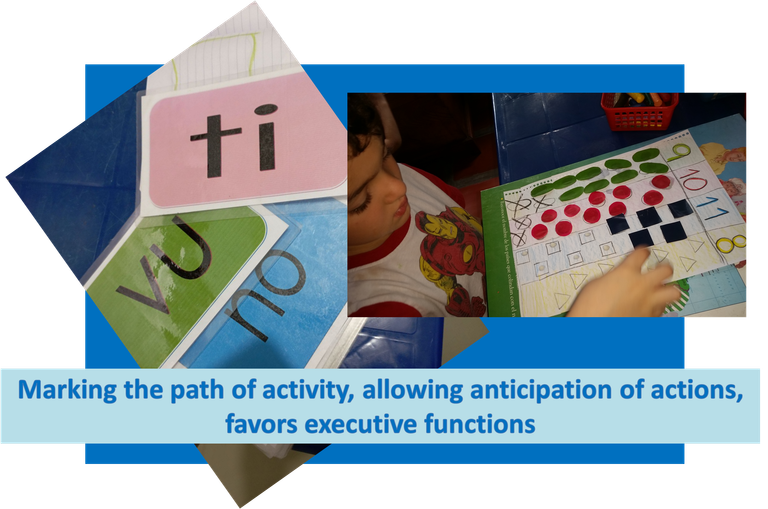
It is very important to be clear that EF, both in autism and ADHD, share the same elements; but at the cognitive and behavioral level they manifest themselves in different ways. Stimulation for both populations share common cores from the point of view of the strategy, the formats of the activities will vary depending on each condition and each child.

I am Sandra Cabrera, a graduate in Learning Disabilities, with postgraduate studies in Comprehensive Special Education, Educational Planning and Children's Literature. If you are interested in topics on special education, disabilities and special developmental conditions, you can contact me through the numbers 04128032993 and 0412 8333334 and at:
The Telegram channel, Learning Disorders.
On social networks Instagram and Facebook1 and Facebook2. Sandra Cabrera Psychopedagogue.
On the spreaker account, @sandracabrerapodcast.
I took the photos with my Redmi11 phone and edited them in PowerPoint.
I translated them with Google.
¡Bienvenidas las Delegaciones / Welcome Delegations
Trail de Curación / Curation Trail
Tus aportes son excepcionales en nuestra comunidad.
Muchísimas gracias 💙Saludos @sandracabrera.
Gracias a ustedes por la receptividad y la valoración, @mundo.autismo.
@tipu curate 8
Upvoted 👌 (Mana: 0/75) Liquid rewards.
Gracias, @parauri
Gracias por tan valiosa información que nos aportas, @sandracabrera.